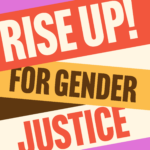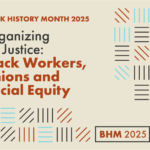A day rooted in women’s ongoing struggle for fairness, economic equality and social justice.
March 8, 1975 marked the first declaration of International Women’s Day (IWD) by the United Nations, but its roots trace back to a 1909 protest in support of women garment workers in New York City. Unions have been key to changing the lives of working women – from the bread and roses movement, to bargaining (and striking) to win parental and family benefits, pay equity and breaking the silence around sexual harassment and domestic violence.
Celebrated on March 8 every year, International Women’s Day (IWD) is fundamentally a political protest about conditions in the workplace and society. The day has moved around over the past century finally settling on March 8th in 1975. Its roots go back to a 1909 protest organized by the Socialist Party of America in New York in honour of the women garment workers’ strike held the year before. Protest continues in the coming years on the last Sunday in February calling for improved working conditions and equal rights.
The idea for a formal day of action belongs to Luise Zietz, who initially championed the cause at the 1910 International Women’s Conference in Copenhagen, organized to precede a general meeting of the Second International. Delegates from 17 countries agreed to promote equal rights and voting rights for women on an annual basis. On March 19th, 1911, protests in Germany, Austria, Denmark and Switzerland marked the first truly international day. Over 1 million women and men rallied to demand the right to vote, the right to work, to vocational training and to end workplace discrimination.
During World War I, women in Europe protested on March 8th, 1914, calling for an end to war and to express worker solidarity. In 1917, Russian women called for a “Bread and Peace” strike on the last Sunday in February, which fell on March 8th in the Gregorian calendar – an event that marks the start of the Russian Revolution.
The day was finally entrenched on March 8th in 1975, when the United Nations declared International Women’s Year (IWY). In Canada, IWD and IWY have been platforms to demand equal citizenship, voting rights, pay equity, reproductive rights, Indigenous rights, childcare, equality and justice.
Today, unions work with community groups, national organizations and international partners to win a better deal for women and their families including: comprehensive pay equity, a national public child care program, workplace support for victims of domestic violence, and ending the culture of discrimination and harassment.
Women and their unions are #donewaiting and working together for fairness from employers and governments.






